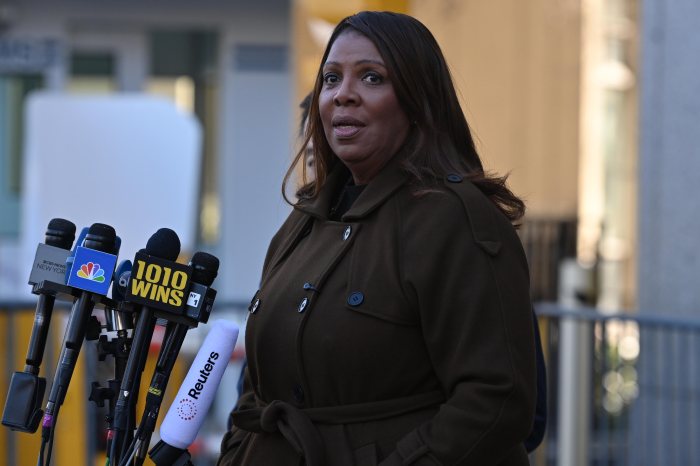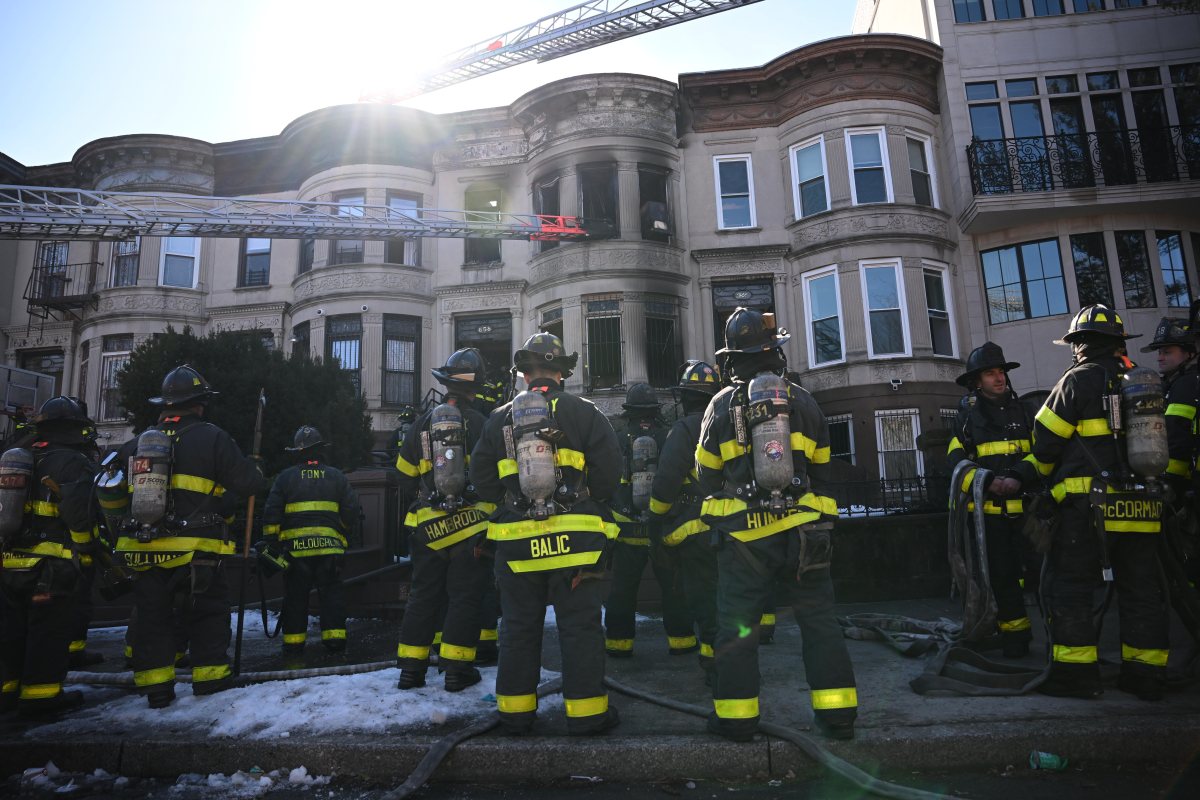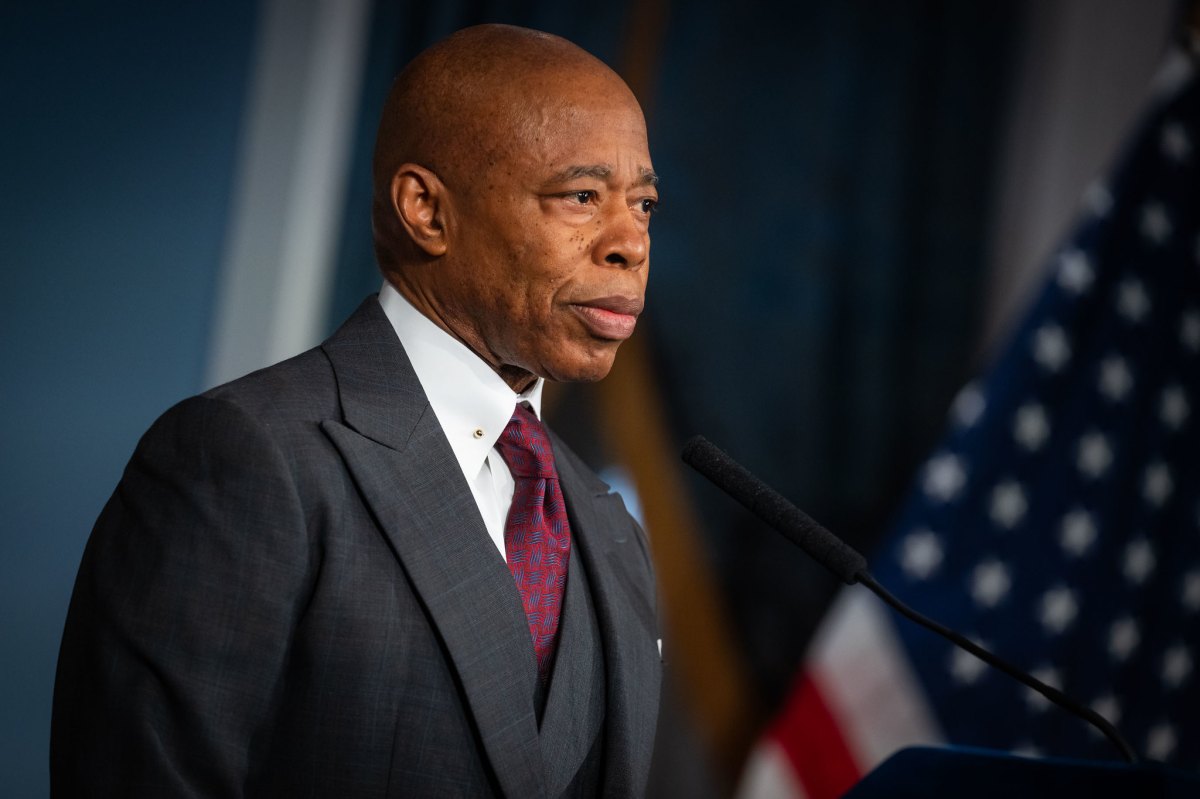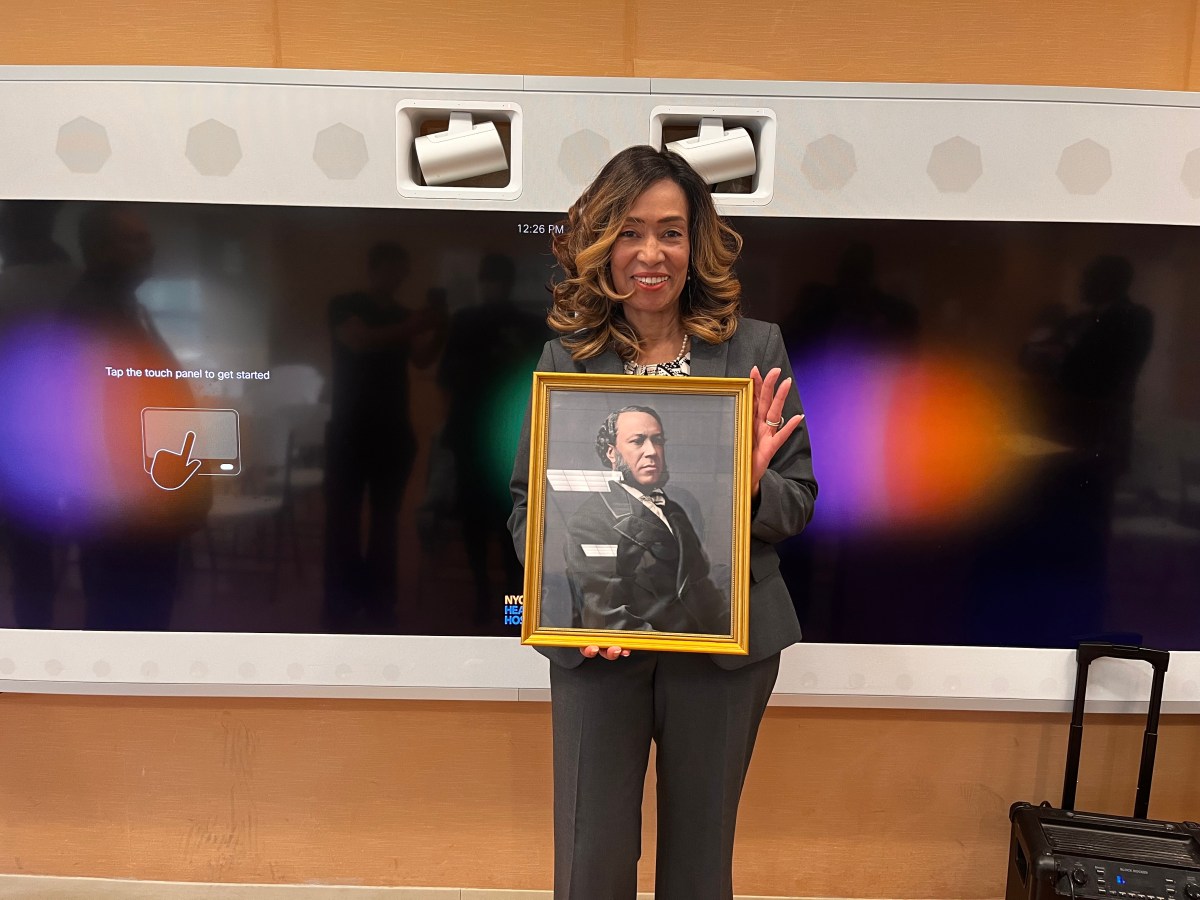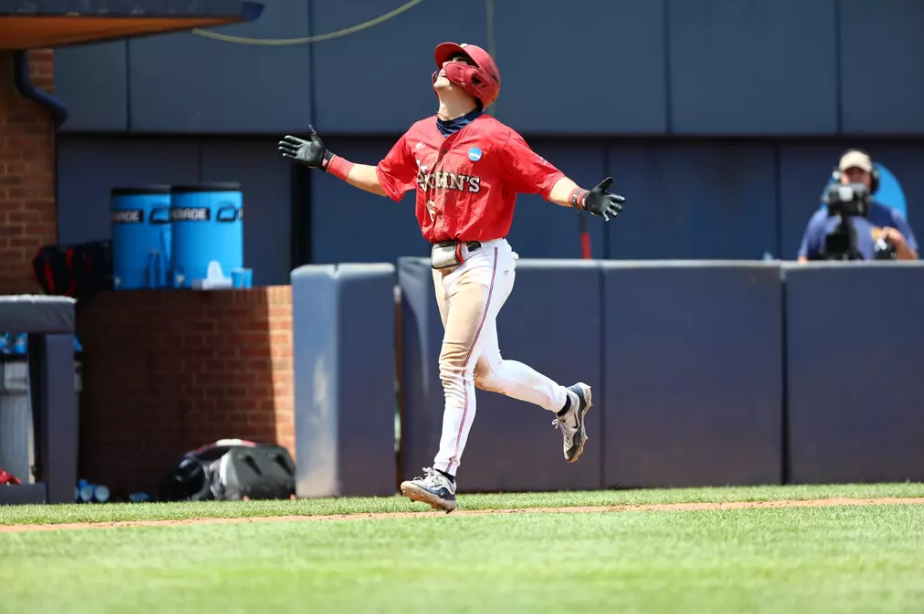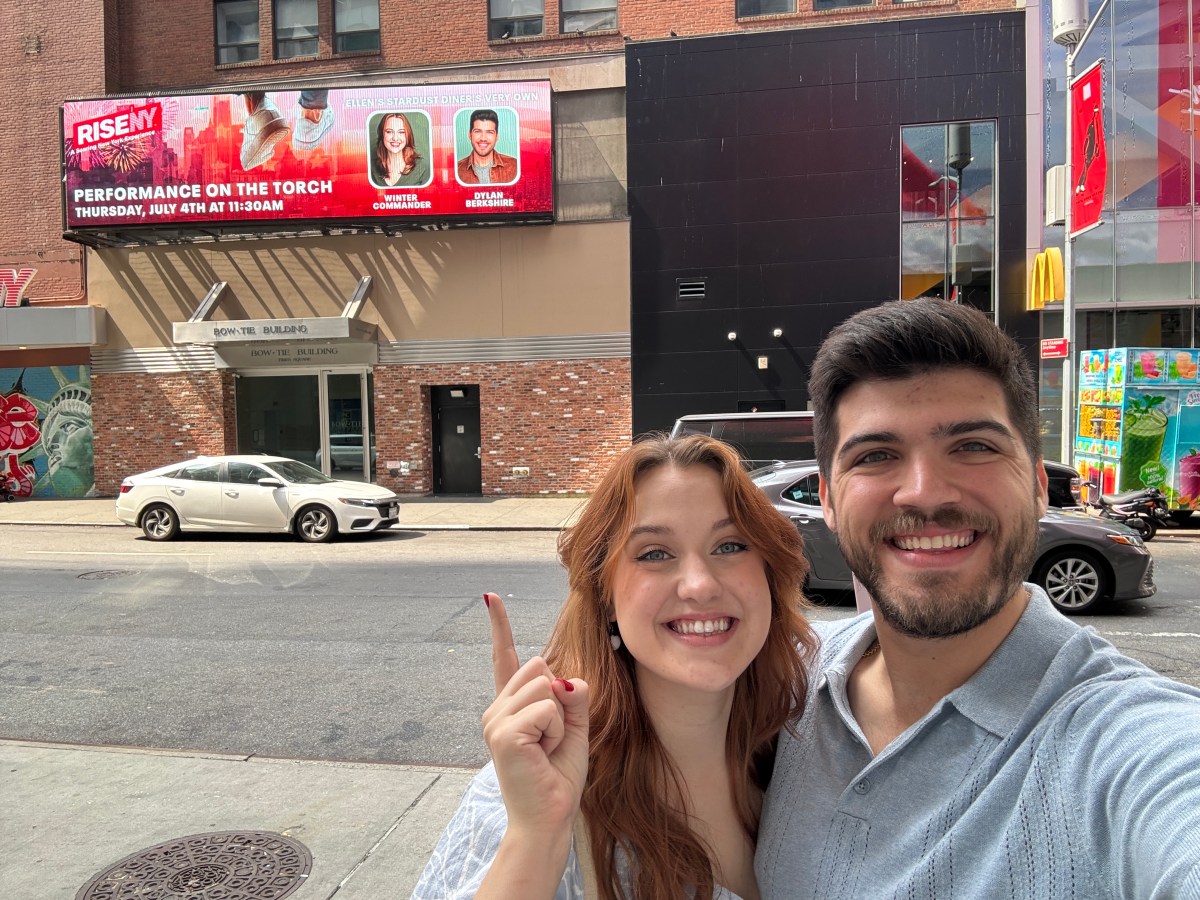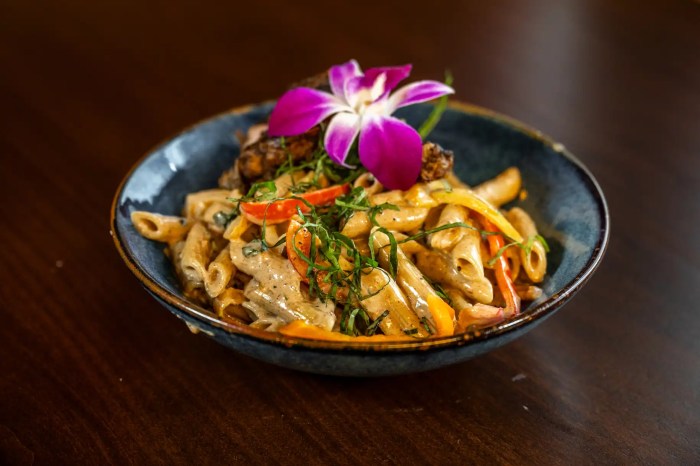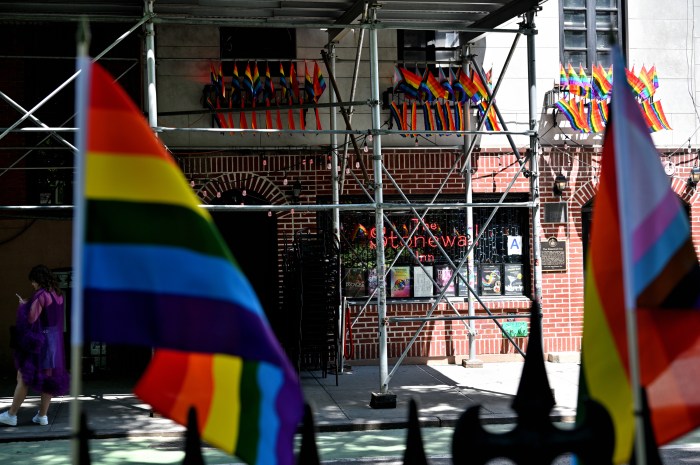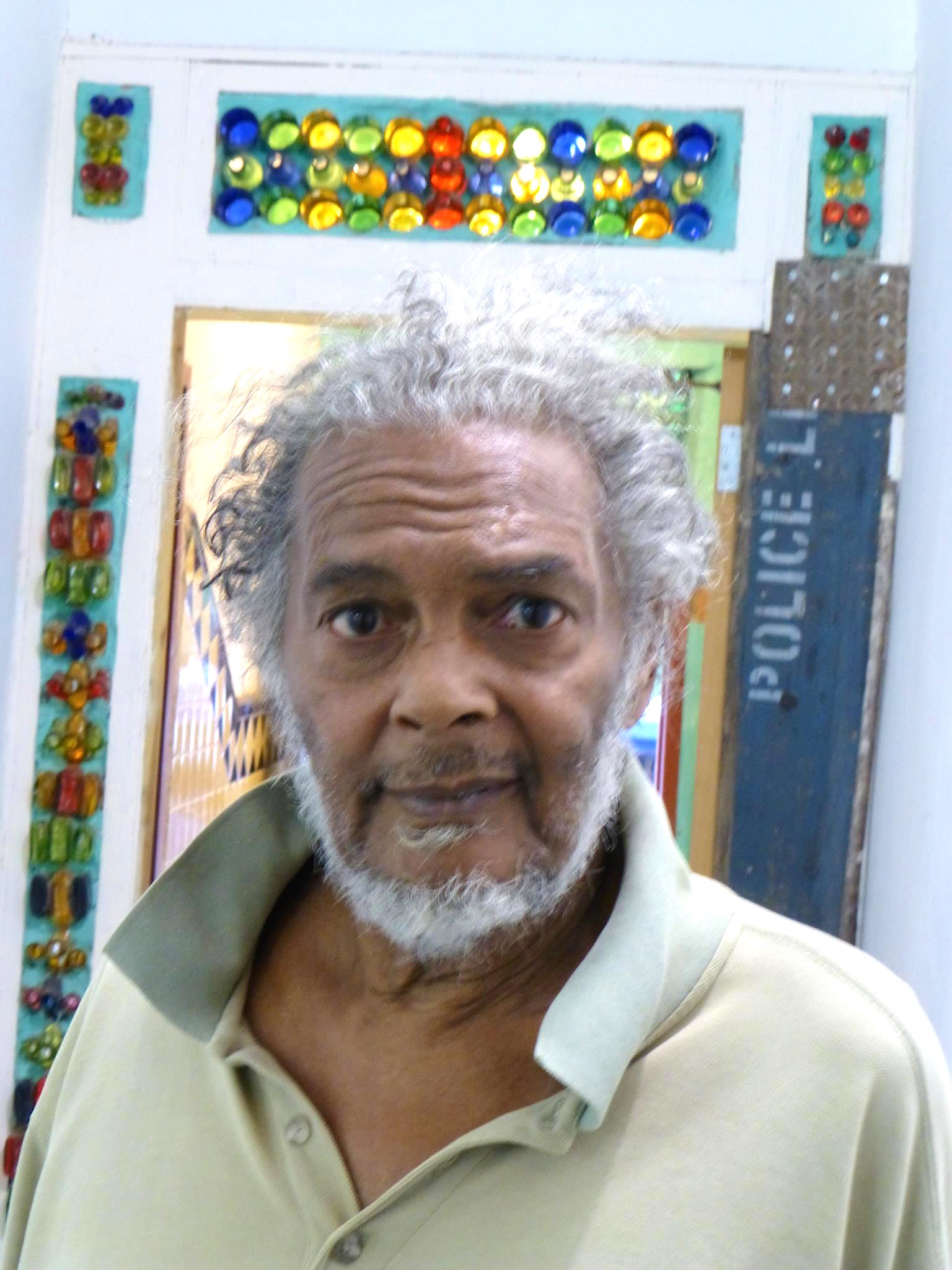
BY SARAH FERGUSON | It’s hard to fathom a Lower East Side without John Farris. The beloved, if notoriously cantankerous, poet was found dead of a heart attack in his one-bedroom apartment at the Bullet Space artists’ homestead on E. Third St. on Jan. 22. He was 75.
With his sharp wit and abrasive personality, Farris was for decades an integral part of the Downtown literary and jazz scenes. He performed at a wide range of venues, reading wry, lyrical poems and densely crafted prose that both celebrated and satirized the people of the Lower East Side. He insisted that you listen to him — whether you wanted to or not.
Though he was constantly writing, Farris didn’t actually publish much — a single novel, “The Ass’s Tale,” put out in 2010 by the Unbearables collective, a slim volume of poetry, “It’s Not About Time” (Fly By Night Press, 1993) and some chapbooks — along with numerous poems, short stories and essays he contributed to magazines, art journals and anthologies. Yet his influence extends far beyond what ended up in print:
In 2008, the Howl! Festival named him poet laureate of the Lower East Side, and in 2013 he won an Acker Award for his novel, and in recognition of his life spent performing and mentoring other writers and artists — many of whom went on to achieve national prominence.
“His work was extraordinary. He plucked these gorgeous, surreal and very funny poems out of thin air,” said writer Darius James, who first encountered Farris in 1983 when Farris was living in the back room of Life Cafe on Avenue B and running a weekly reading series there.
James credits Farris with helping school him in his artistic roots.
“John was definitely part of the black bohemian scene that’s been in existence and largely undocumented since the 1840s,” said James, author of “Negrophobia” and “That’s Blaxploitation.”
“He knew all the black musicians, writers and artists who were prominent in the ’60s, ’70s and ’80s. He knew them from hanging out in places like Slug’s,” James added, referring to the old jazz spot on E. Third St. “So you had a sense of continuity from John. He was part of the Lower East Side bohemian spirit.”
“He was a great poet. He owned the streets. He really was of the neighborhood. A fixture,” said Bob Holman, founder of the Bowery Poetry Club. “He was also a synesthete, someone who could see sounds and hear colors, for whom the senses mix. You can hear it in a lot of his jazz poems. They are filled with crazily imaginative language that is like synesthesia.”
Though fiercely political — he was at one time a bodyguard to Malcolm X — Farris eschewed any inkling of black nationalism, hewing instead to a more universal aesthetic.
“John was the first black poet I met who didn’t talk about the black experience in his poetry, and I was impressed with that,” said renowned conceptual artist David Hammons, who considered Farris a muse.
“He had a sense of humor and I really liked that,” Hammons continued. “Wherever he went he could seduce the bartenders to give him free drinks. I watched him go from place to place — Life Cafe, Vazac’s, 2A, NuBlu. Everywhere he went, he’d sit at the corner of the bar and hold court. He would, like, own the bartender because of his mouth.” (Of course, that same mouth got him 86’d from most places, too.)
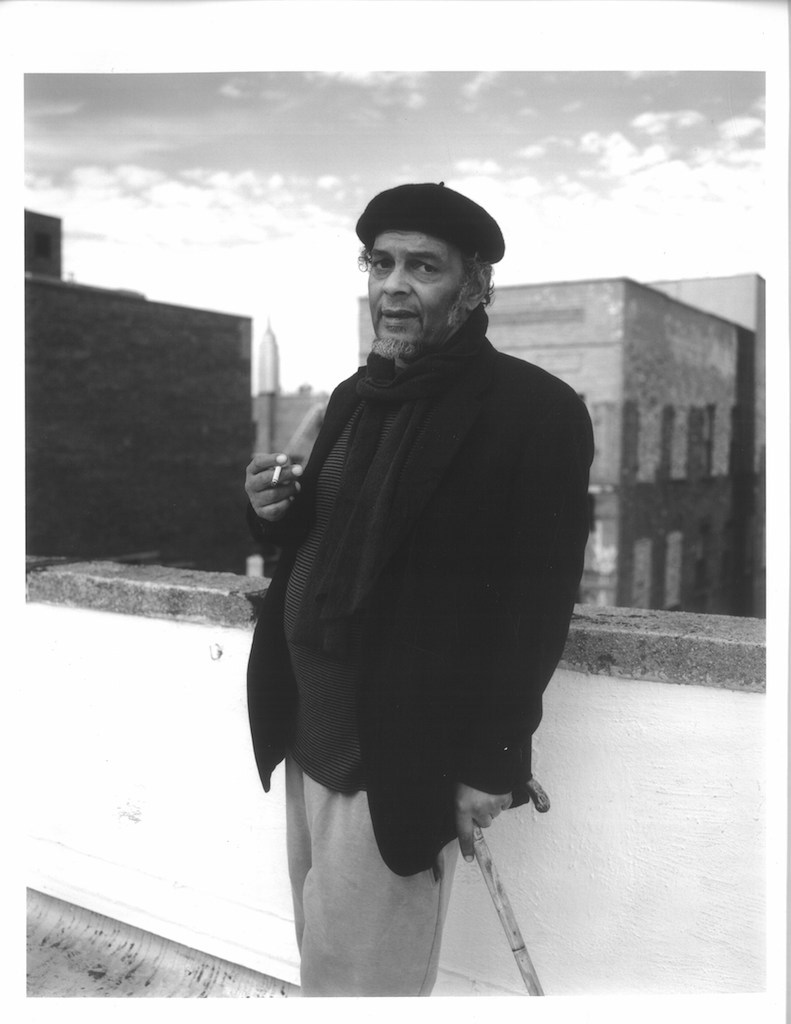
He also was a ladies’ man and a “prolific father,” joked his daughter Sienna, who lives in Brooklyn. He was married four times and fathered six daughters “that we know of,” she said.
A high-school dropout, Farris was remarkably well-read and would have enjoyed wider acclaim were it not for his determinedly outsider status and obstinate personality.
Part of that owed to his difficult upbringing. He was born in Far Rockaway in 1940 and raised by a single mother who was part Seminole and from the South. They lived with his two sisters and brother in a small apartment with a shared bathroom down the hall.
“The library was my refuge,” Farris said in an interview. He left home when he was 17 and began hanging around the coffeehouse scene in Greenwich Village.
I was born in 1940
on Manhattan, “Island
of Hills”, “Place of Inebriation”.
placer of muskrat, beaver
and mink. My ancestors built a wall
for the Dutch
to keep them contained, out
like a line in the sand, being
thereby kept both in
and out, effectively dividing themselves
against themselves for the patroons…
— from “Heritage,” 1999 (for Amadou Diallo)
“He was one of the original Beats in his way. He came of age among the Beats,” said Dalton Anthony Jones, an associate professor of cultural studies at Bowling Green State University in Ohio, who considers Farris his stepfather. “When I was kicked out of school at age 13, he took me under this wing and mentored me,” said Jones.
If Farris found freedom in the counterculture, he quickly ran up against its double standards. In 1959, he was smoking a joint with a couple of white Beatniks on Bleecker St. when he got busted for trafficking marijuana. Farris said his friend asked him to pass a paper bag of pot to some guys, who turned out to be undercover cops
“I didn’t know what was in the bag, it wasn’t even my reefer,” Farris later said. Yet, unlike his white counterparts whose families could afford lawyers, Farris was sentenced to three years. While in prison, his mother passed away on the day of his 21st birthday.
“It was a big turning point in his life. He talked about that a lot,” said Jones. Another setback was the heroin overdose of his older brother, Philip, an artist and jazz musician.
Released from jail in 1961, Farris moved to the East Village, where he met his first wife, Chinyelu, a dancer for Babatunde Olatunji. They had a daughter, nicknamed Bibi, and lived briefly in a public housing apartment on E. Third Street between Avenues C and D (just a few doors down from the building that became Bullet Space) before migrating uptown to Harlem around 1964. There, Farris fathered another daughter and helped raise Sai, Chinyelu’s son from a prior relationship with actor Morgan Freeman. According to Chinyelu, they lived off her dancing and Farris’s poetry.
“He’d go to jazz shows or stand on the streets of Greenwich Village and recite poems, and people would give him money for it,” she recalled.
Though never a Muslim, he was inspired by Malcolm X and served briefly as one of his bodyguards. On the night of the assassination, Farris was in the Audubon Ballroom, assigned to guard Malcolm X’s wife, Betty Shabazz. Farris’s wife, Chinyelu, then pregnant, was sitting in the front row with their first daughter and Sai.
“When Malcolm was shot, the gunshots were going and they were all running from the stage to the back of the ballroom, and John was running after the shooters,” recalled Chinyelu. “I know he later felt guilty that he hadn’t done more, though he shouldn’t have. They were shooting like crazy. It was total chaos.”
Phoebe Farris, his second wife, said John related the story differently:
“John saved his first wife and their two children, who were in the front row during the shooting,” she said. “His first instinct was to save his own family, and he felt guilty later.”
Disgusted by all the political infighting in the black militant scene in the wake of the assassination, Farris migrated to the Black Arts Movement, then under the orbit of Amiri Baraka — though again he found himself on the outskirts.
“During that period of black nationalism, he never succumbed to the easy answers of racial essentialism, even though that often put him at odds with some of the figures of that period,” said Dalton Jones. “He always maintained his own center of gravity.”
In the early ’70s, he taught poetry and music to kids at the Children’s Art Carnival in Harlem, where he worked with Phoebe.
“He invented a poetry board game for children and the kids loved it,” she recalled. “But he was not able to get funding to market it.”
He and Phoebe had a daughter, and Farris sought to make a name for himself on the poetry circuit, reading at jazz and dance performances and literary events alongside people like Quincy Troupe, Steve Cannon, Ntosake Shange, David Murray and Don Cherry.
“He was very free-spirited,” recalled Bibi, who would visit on weekends. “He used to walk down the streets playing this wooden flute — he was so good at it. He had a bop to his walk.”
His family describes Farris as a loving father, but quintessentially narcissistic and difficult to live with.
“He wanted to have the luxury of just writing and have others deal with the real world of paying the rent, etc.,” said Phoebe, who went on to become a professor of art and women’s studies at Purdue University.
“He was a creative genius and artist, but he made it clear to me he was devoted to his poetry and art first,” added their daughter, Sienna. “For him, it was like he had to make that decision.”
Bibi, a retired physician who now lives in Washington State, blames their estrangement more on circumstances.
“He always wanted to see us, but my mother kept us from having contact with him because she was furious that he left her,” she said.
Following the breakup of his second marriage, Farris returned Downtown and assumed the role of poet full time. He had a remarkable knack for living rent-free. He lived with jazz great Ornette Coleman for a spell in the early ’80s. (“I was the doorman,” he quipped. “I let the ladies in.”) He also lived in back of the after-hours bookstore Neither/Nor on E. Sixth St., where he held a weekly reading series that fans say was not to be missed — hosting cutting-edge writers like Baraka, Kathy Acker, Miguel Pinero, Joel Rose, Catherine Texier and Patrick McGrath.
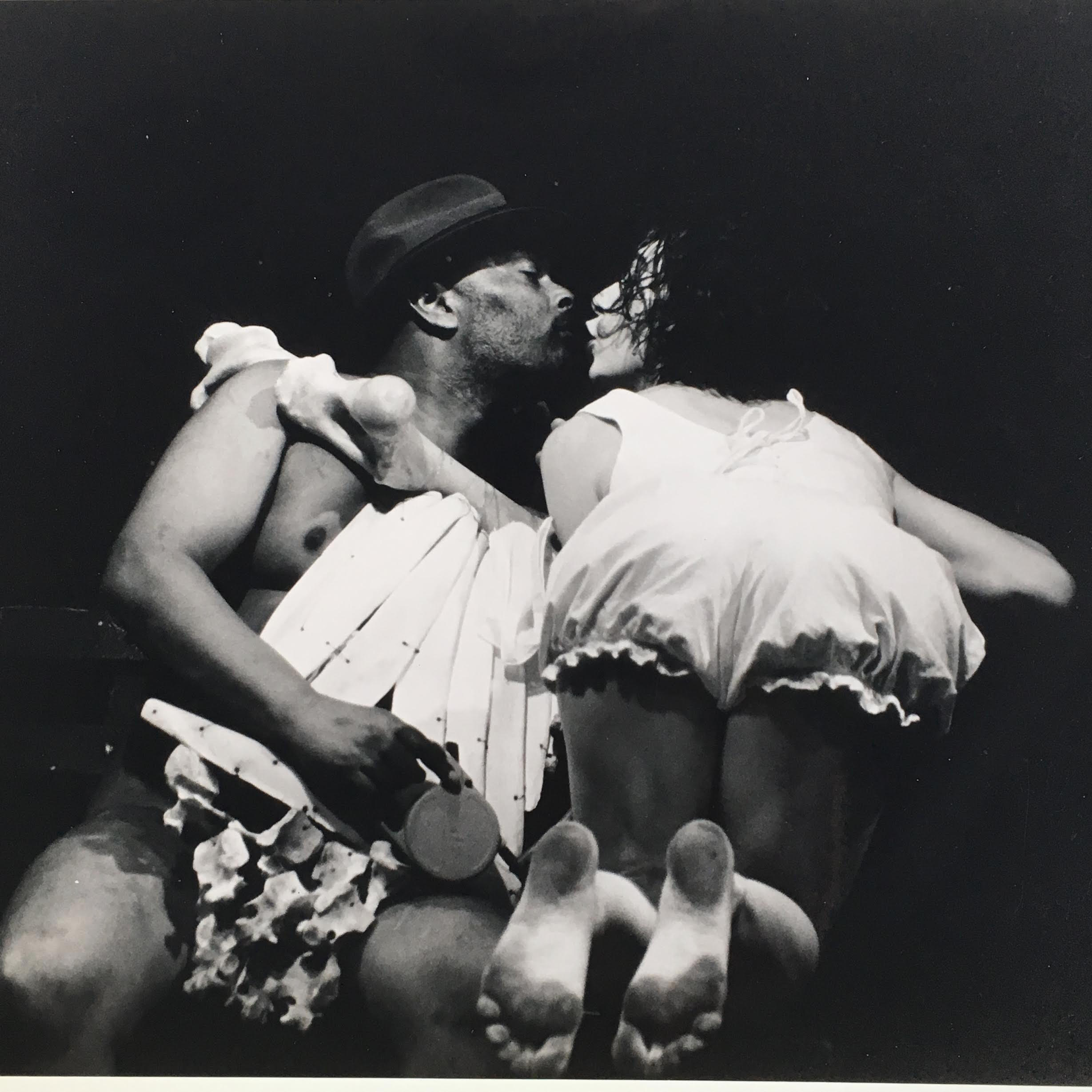
When Neither/Nor closed in 1986, he took up residence in a squat at 539 E. 13th St., where he held readings at the second-floor Alchemical Theatre. (Drunks, crackheads and other vagrants from this period turn up in writings, morphed into animals — including Farris himself.) He also resided in the basement of the Living Theatre on E. Third St., where he served as a caretaker, staged plays and ran a midnight poetry series.
Dancer Patricia Winter recalled performing with Farris in her feminist performance piece “Barkelot” — she on a leash and Farris in a costume made entirely of cow bones.
“John was such a trooper,” she said. “He was naked in this bone costume that weighed like 50 pounds, and he was already kind of crippled then, so he was limping, but he loved it. It was just such a bizarre piece. [Painter] Al Loving did the set design and Frank Lowe, the saxophonist, played with us.”
When the Living Theatre closed in 1993, the artists at Bullet Space took him in.
“Bullet Space was a godsend for John,” said Jones. “He really did a lot of writing and readings there.”
Until it closed in 2014, Farris was also a constant presence at A Gathering of the Tribes gallery across the street from Bullet, bringing his acerbic voice to poetry workshops, readings, art shows and other happenings there. And he was a founding editor for the literary journals Peau Sensible and Sensitive Skin, deeply influencing that close-knit circle of writers.
“He was our loa, our Papa Legba,” said writer Norman Douglas, referring to the Vodou spirit trickster and elocutioner.
Still, friends say his obstinate personality often got in the way of more worldly success.
“He was definitely an antagonist. He was a difficult man. He ended up burning a lot of bridges,” remarked Jones.
Darius James recalled the time he persuaded Bob Guccione, editor of Spin magazine, to allow Farris to interview Sun Ra, with whom Farris was tight.
“The interview was great,” James said. “It still gets quoted in academic circles. But John got mad when Spin didn’t pay him in a timely fashion. So he went up to the office and was like, ‘Mo’f–kas, give me my money!’ So Guccione had them cut him a check right there, but that was it,” James said, meaning Farris had blown up a good connection.
Similarly, Tribes impresario Steve Cannon said that shortly after he published Farris’s first book, “It’s Not About Time,” he arranged for Farris to guest lecture at Rutgers University, where Nuyorican poet Miguel Algarin was teaching.
“Rutgers was going to pay him like $1,500 and buy 60 copies of the book,” Cannon recalled. “But when we went back in the storage room, we found all the books were gone. Farris sold them all to buy drinks at [the bar] 2A.
“He was constantly getting in fights with people,” laughed Cannon, a close friend. “Not only was he mean, he would kick someone’s ass if he got into a disagreement with them. I used to have to throw him out of Tribes all the time because he would antagonize these young poets I had helping me here. He got thrown out of the Nuyorican [Poets Cafe] for berating the poets there.”
Farris made no apologies about such behavior. He reveled in the flaws of others, and himself.
Two years past fifty & I’ve got a pot belly.
My teeth, demolished bridges I can’t cross
anymore; the abutments list in weak gums
— from “Bridges,” 1993
Farris was also stubborn about not pushing to get his stuff in print
“It was a willful choice not to publish,” said Douglas. “Like Socrates, he felt it was more important to reach somebody through his voice in person — to imprint oneself via the oral — rather than through the written word.”

Drafts for Farris’s phantasmagorical novel, “The Ass’s Tale,” circulated around the Lower East Side for years before Ron Kolm of the Unbearables collective persuaded Farris to let them publish it. The book, which won a PEN Oakland Award in 2011, is a satirical play on the ancient Latin novel “The Golden Ass,” by Apuleius. It’s also a shaggy-dog tale about a down-and-out drifter who turns into a dog, suffused with punning references to jazz, mythology and pop culture.
“He mixes in all these pop references but the dude is actually a classicist,” noted Kolm, who said he was “in awe” of Farris’s writing.
Farris loved the Lower East Side; he said he found “everything” he needed there. His work captured the life and cadence of the neighborhood with meticulous detail. He found wonder in the most mundane, with funny puns that get inside your head and tug at you. “Sightings,” a chapbook he published in 2004 with Sisyphus Press, is made up of poems about sitting at his window watching a new building go up.
“He had a very photographic eye,” noted poet and publisher Steve Dalachinsky. “He told me he only wrote stoned. His drug of choice was weed. He smoked weed constantly, and he would smoke before he gave readings.”
You can google videos of him reading alongside jazz musicians that should be preserved on vinyl for future generations to venerate. “Flatting Third” — a film poem produced by Ed Montgomery in 2008 — features the voice of Farris juxtaposed against panoramic views of Loisaida, accompanied by the searing trumpet of Jumaani Smith.
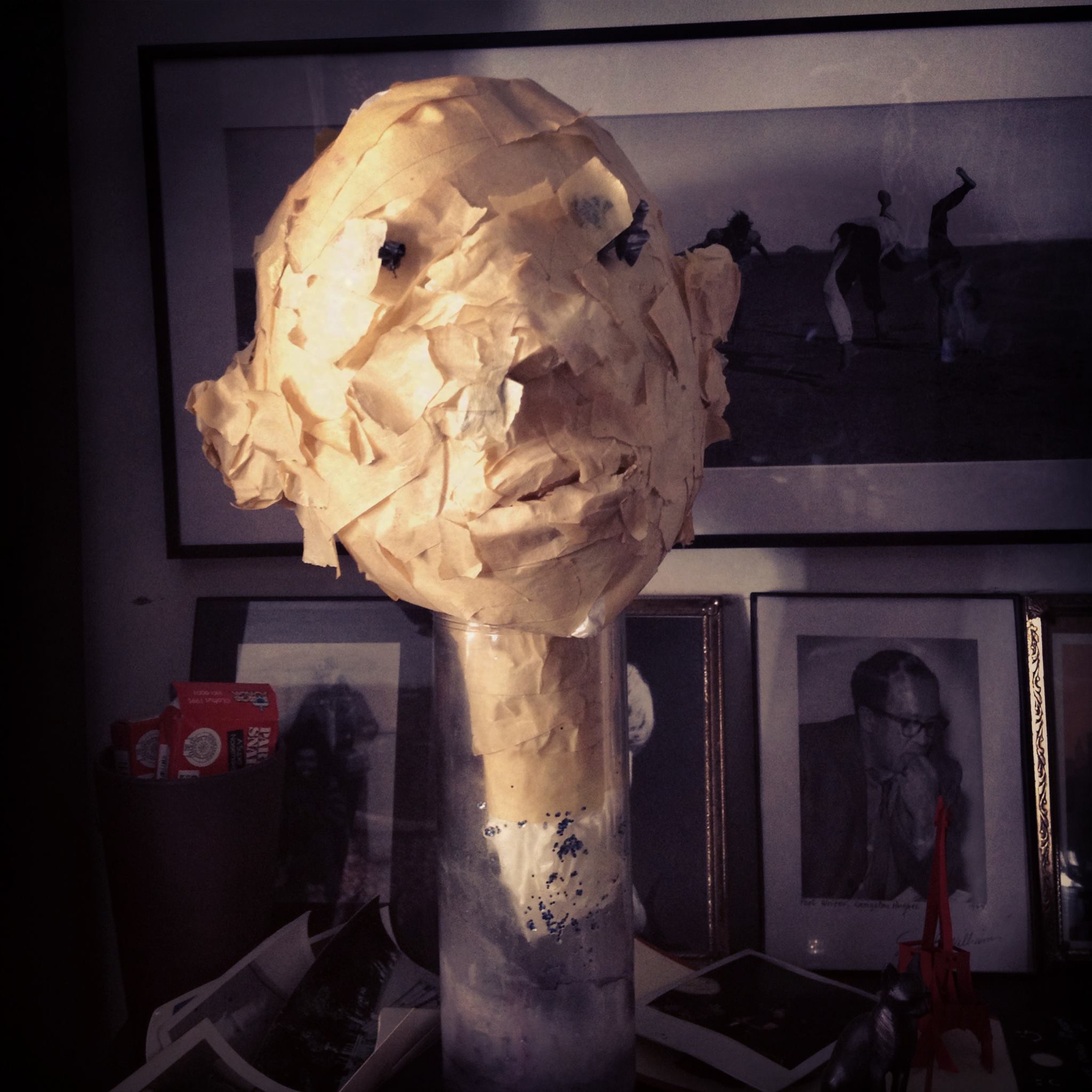
Partly on the suggestion of Hammons, who thought it would be a good way to earn money, Farris took up drawing in his latter years, producing scores of self-portraits and sketches that blanketed his walls, and sculpting heads out of plastic bags and masking tape. He had his first show in 2010 at Bullet, and sold several pieces to collectors.
I draw like a precocious ten-year old. I
draw blacks and make vivid color
in black graphite, use self-portraits to suggest
blue, anger say, to suggest red.
If I am brown, it is only in the context of the context,
a wink to suggest the bright, the clever.
— from “Drawing,” 2015
But over the past decade, his health and his mobility declined markedly. Friends said he stopped drinking in 2000, after he suffered a minor stroke — or that’s what his family believes — it was never fully diagnosed.
“John always refused to go to the doctor. You could threaten to call 911, but he wouldn’t budge,” said Bullet Space co-founder Andrew Castrucci.
He had trouble walking and climbing the stairs to his fourth-floor apartment, so his fellow artists at Bullet helped care for him. Photographer/writer Maggie Wrigley frequently brought him meals.
“He was one of the most creative, challenging and inspiring people I have ever met,” she said.
“He was like our grandfather,” added Castrucci.
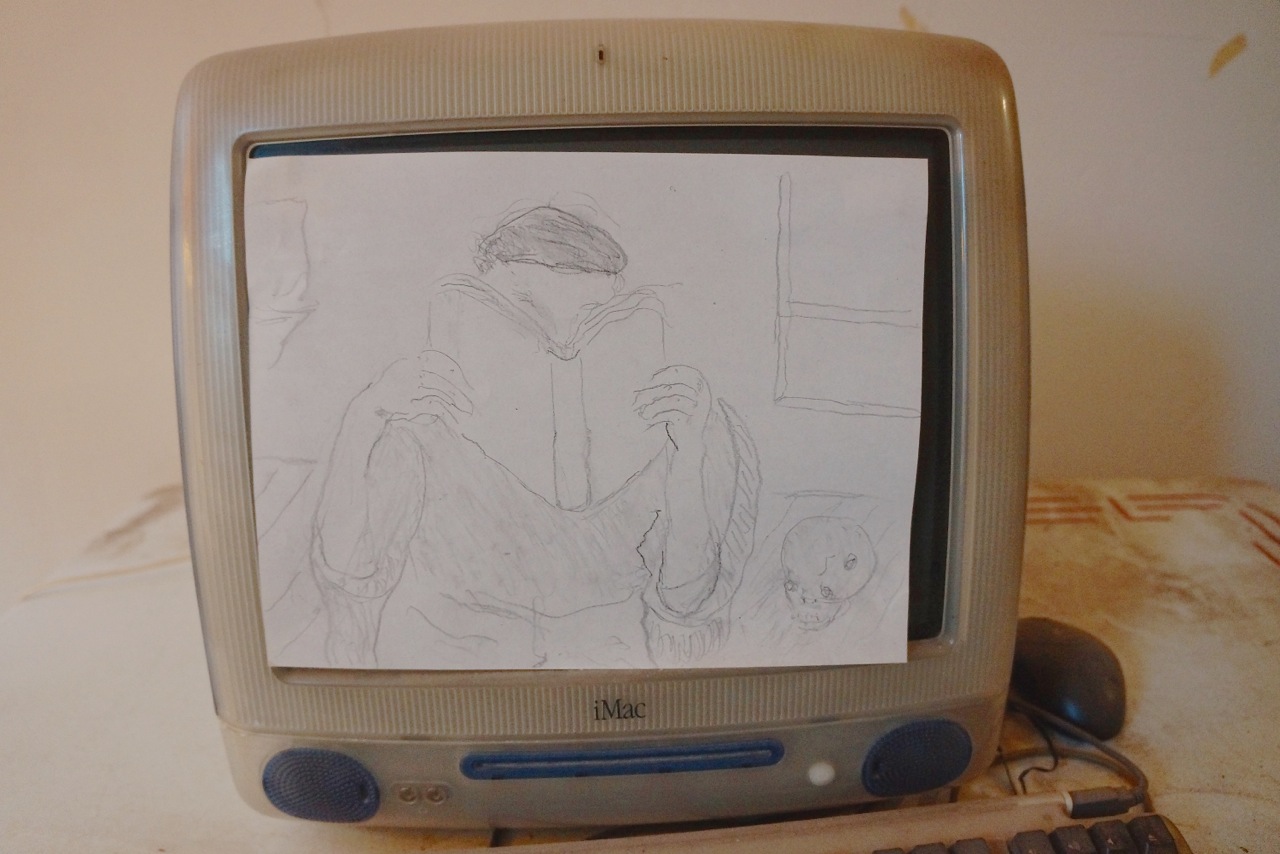
“I saw him the week before [he died] on Avenue C,” said Holman. “He was hobbling down the avenue on a double cane set, bent over like some kind of crazy happy beast. We joked about his getting back up on the bicycle. He loved to ride the bicycle. He would ride it even when he had trouble walking. I don’t know why he grew so old so fast.”
“He got more isolated in the last year,” Castrucci said, “especially after Tribes closed. He’d spend weeks up in his apartment without leaving.”
… All my musician friends are dying
Diz, Miles, Clifford Jordan, Philip Wilson; Sun Ra is in Alabama
helpless with a stroke (O black world, I never imagined this
life without Sun, without the stride piano, his sequined dance)….
— from “Bridges,” 1993
“He grew to enjoy solitude,” said Bibi, who spoke to him at least twice a week in his final years and sent him food via Fresh Direct.
Nevertheless, Castrucci believes he died happy.
“He didn’t die in the hospital. He drew every day. Right before he died, he was working on a new wave of poetry — some of his best stuff. It was all about drawing,” Castrucci said, sifting through the detritus of handwritten poems, sketches and loose tobacco mixed in with old bills and correspondence that littered the floors of his apartment.
“I’m finding unfinished novels in here.”
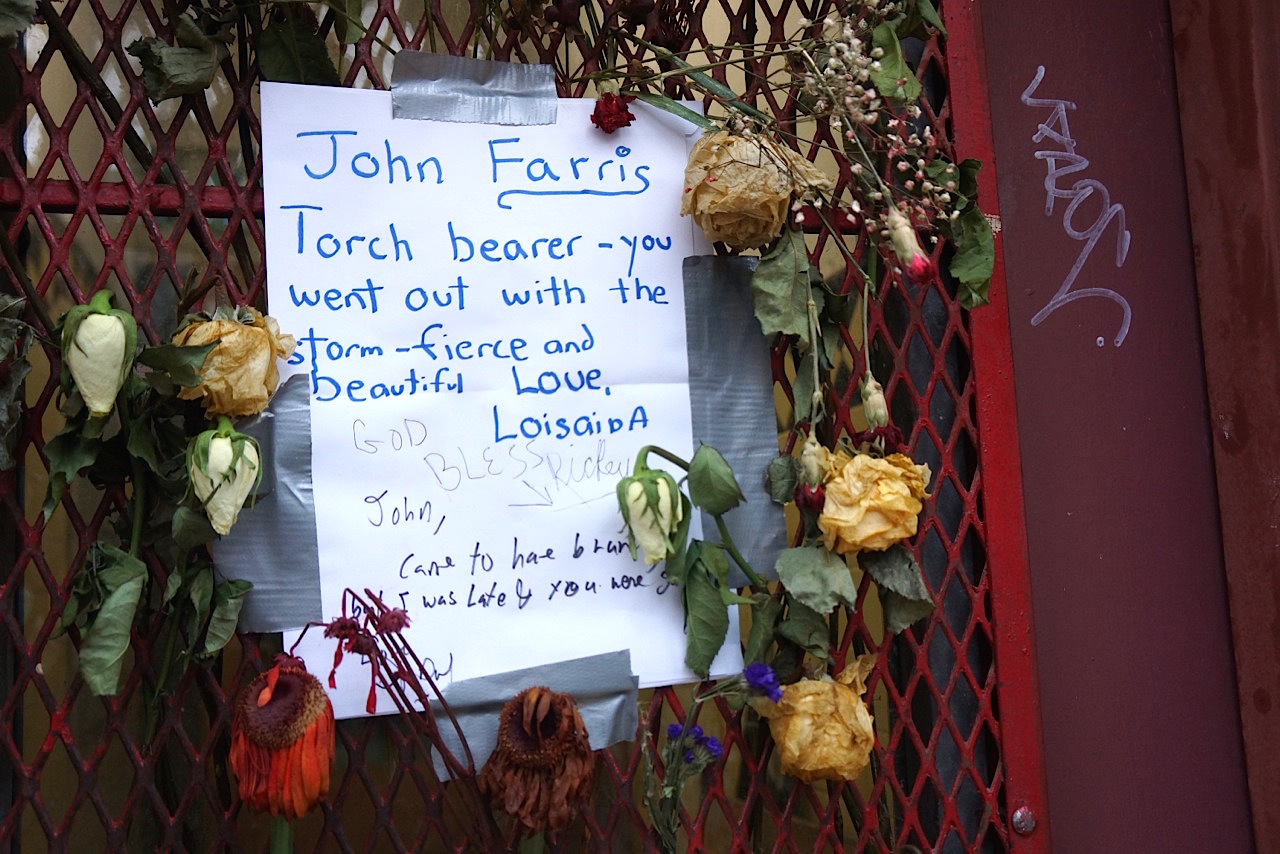
Farris’s ashes will be scattered under the maple tree in the backyard of Bullet, in accordance with his wishes. His apartment will go to his grandson, Richard, an aspiring jazz musician — though it will be rented for several years first to pay off Farris’s back rent.
A celebration of Farris’s life and work will be held on April 29 at Judson Memorial Church, in the Village, at 55 Washington Square South, from 6 p.m. to 9 p.m. There will be a retrospective show of his art and ephemera at Bullet Space in May.
**********
At last
I am
Making
Self-portraits
I can
Get myself
Arrested for.
The bridge
of the nose
will finally take me
to Brooklyn.
I’m back on
Positive
Identification. It
Balances
The sneer
of the lips
The eyes
Look you straight
in the face
With
Pure arrogance. Yes, I confess
— again,
I did that
I’m bad.
— one of Farris’s last unpublished poems
**********
I had tried being born again in 1940: no fanfare (flash photographs
of the Child-Me-Asleep, Under the Madonna’s Adoring Gaze, Magi),
nothing
fancy (halo, my first shoes, bronzed, made into bookends)
July 19th, New York City, minor, inauspicious,
cloudy: specious beginning…
— from “Born Again,” 1993



